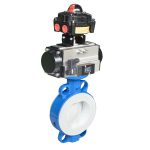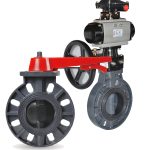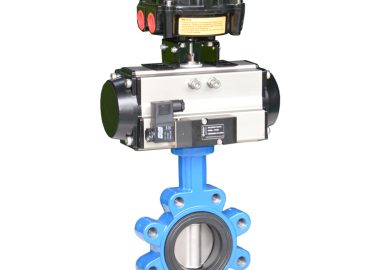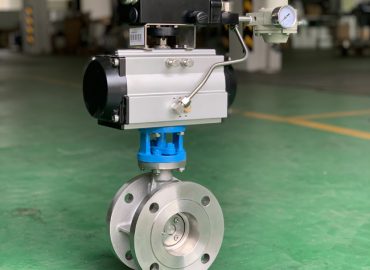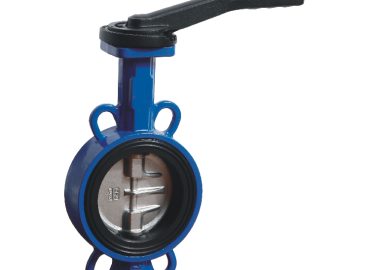In an interconnected world where efficiency and reliability are paramount, the role of wafer style butterfly valves cannot be overstated. These seemingly simple devices play a crucial part in a variety of systems we often take for granted, such as heating, ventilation, and air conditioning (HVAC) systems, water treatment plants, and irrigation systems. This blog post aims to shed light on the function and importance of these valves, delving into their specific applications in each of the mentioned systems. As we navigate through the intricacies of wafer style butterfly valves, we will gain a deeper understanding of their impact on our daily lives and the broader industrial landscape.
Introduction
Wafer butterfly valves, although not commonly recognized in everyday conversation, serve a pivotal role in our daily lives. These versatile devices, known for their simple design and efficient operation, are fundamental components of various critical systems that sustain modern living. In heating, ventilation, and air conditioning (HVAC) systems, these valves regulate the airflow, ensuring optimal temperature and air quality. This regulation not only provides comfort but also contributes significantly to energy efficiency, thereby reducing costs and environmental impact. In the realm of water treatment, wafer style butterfly valves play an equally vital role. They control the flow of water through treatment plants, allowing for precise management of the treatment process. This control is essential for ensuring the delivery of clean and safe water to households and industries. Furthermore, their robust construction makes them suitable for use in harsh conditions, presenting a durable solution for flow control in water treatment facilities. When it comes to irrigation systems, these valves again prove their worth. They regulate the flow of water in irrigation networks, preventing wasteful leakage and ensuring that crops receive the right amount of water. This precision contributes to agricultural productivity and water conservation, which are particularly crucial in a world grappling with climate change and food security issues. Therefore, while they may seem insignificant at first glance, wafer style butterfly valves hold a central role in HVAC, water treatment, and irrigation systems, underpinning the smooth operation of these systems and contributing to our quality of life.
Brief overview of the blog post
In this blog post, we will explore the integral role of wafer type butterfly valve in three key areas: HVAC systems, water treatment plants, and irrigation systems. We will delve into the mechanics of these essential components, discussing their functionality and unique features. The blog will further highlight how these valves contribute to the efficiency and effectiveness of HVAC systems, ensuring optimal temperature control and energy conservation. In the context of water treatment, we’ll examine how they regulate flow, withstand harsh conditions, and help deliver clean water. Finally, in irrigation systems, we’ll uncover their role in controlling water distribution, preventing wastage, and promoting agricultural productivity. Through this exploration, we aim to enhance your understanding of these seemingly simple yet crucial devices that significantly impact our daily lives and the broader industrial landscape.
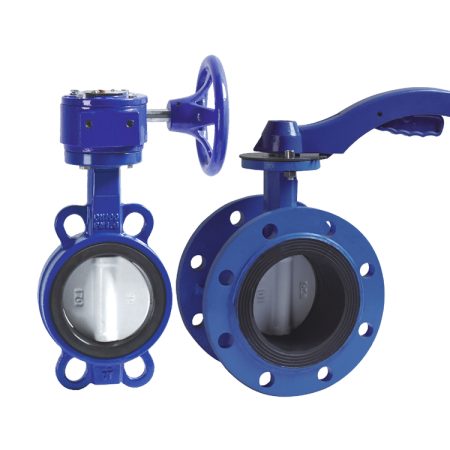
Explanation of what a wafer style butterfly valve is
A wafer style butterfly valve is a type of flow control device that finds its application in a variety of industrial systems. It is named for its distinctive design, which features a disc mounted on a rotating shaft. When the valve is closed, the disc is turned so that it completely blocks off the passageway. When the valve is open, the disc is rotated a quarter turn so that it allows unrestricted passage, offering minimal resistance to the flow. The term ‘wafer’ refers to the design of the valve’s body, which is typically sandwiched between two pipe flanges. This wafer body design is compact and cost-effective, making these valves a popular choice for large-scale industrial use. They are known for their durability, ease of installation, and efficient operation, enabling precise control over the flow of liquids or gases in a system.
Importance of wafer style butterfly valves in various systems
The importance of wafer style butterfly valves in various systems is immense due to their versatility, reliability, and efficiency. In HVAC systems, these valves are essential for controlling airflow, ensuring that the systems operate optimally to maintain desired temperatures, thereby enhancing comfort and energy efficiency. Water treatment plants rely on these valves for precise flow control throughout the treatment process, which is crucial for delivering clean and safe water. The durability of these valves makes them suitable to withstand the harsh conditions often encountered in these facilities. In irrigation systems, wafer style butterfly valves play a significant role in regulating water flow, preventing unnecessary water leakage, and ensuring that crops receive the necessary amount of water. This contributes to increased agricultural productivity and effective water management, particularly important in areas prone to droughts or water scarcity. Their simple design, ease of operation, and maintenance also make them cost-effective solutions for these systems. Hence, wafer style butterfly valves are integral components that significantly contribute to the functionality and efficiency of various critical systems.
Understanding Wafer Style Butterfly Valves
Wafer style butterfly valves, named for their unique design, are critical components in many industrial and commercial systems. These valves consist of a disc mounted on a rotating shaft. When the valve is closed, the disc is turned to completely block off the passageway, and when the valve is open, it is rotated a quarter turn to allow unrestricted passage. This simple yet effective operation enables precise control over the flow of fluids or gases within a system. The term ‘wafer’ refers to the design of the valve’s body, which is sandwiched between two pipe flanges. This configuration makes the valve incredibly compact and cost-effective, which is why they are commonly used in large-scale operations. Beyond their simple design, wafer style butterfly valves are known for their exceptional durability and ease of installation. They can withstand harsh conditions, making them suitable for use in environments such as water treatment plants where they might be exposed to corrosive materials. Additionally, their efficient operation contributes to energy savings, making them an environmentally friendly choice. From HVAC systems to water treatment plants to irrigation systems, these valves play a vital role in ensuring these systems function optimally. Understanding the mechanics and benefits of wafer style butterfly valves provides valuable insight into their widespread use and underscores their importance in our daily lives.
Detailed explanation about wafer style butterfly valves
Wafer style butterfly valves are a type of flow control device renowned for their simplicity, efficiency, and versatility. The design of these valves features a disc, which is centrally positioned and mounted on a rotating shaft. The disc acts as the blocking mechanism; when the valve is closed, the disc is turned perpendicular to the flow, thereby obstructing the passage. Conversely, when the valve is open, the disc is rotated a quarter turn to align with the flow, allowing unrestricted passage of the fluid or gas. The ‘wafer’ in the name refers to the particular design of the valve’s body. Unlike other types of valves that have extended bodies, the wafer style has a short, sandwich-like body that fits between two pipe flanges, making it compact and easy to install. Moreover, they are designed to maintain a seal against bi-directional pressure differential to prevent any backflow in systems that are designed for unidirectional flow. They are widely used because of their robustness, cost-effectiveness, and ease of operation, providing reliable and efficient control over the flow in various industrial and commercial systems.
How they function
Wafer style butterfly valves function by utilizing a disc, which is centrally mounted on a rotating shaft. This design allows for precise control of the flow of fluids or gases within a system. When the valve is in the closed position, the disc is turned to be perpendicular to the flow of the fluid or gas, effectively blocking its passage through the valve. However, when the valve is opened, the disc is rotated a quarter turn so it aligns with the direction of the flow. This alignment means that the fluid or gas can pass through the valve with minimal resistance, allowing for efficient and unrestricted flow. The rotation of the disc is typically controlled either manually using a handle or automatically using an actuator. The compact ‘wafer’ design of the valve body, which fits snugly between two pipe flanges, ensures a tight seal, preventing any leakage and maintaining the pressure integrity of the system. This simple yet effective operation makes wafer style butterfly valves an essential component in various systems requiring reliable flow control.
Unique features and benefits
Wafer style butterfly valves come with a host of unique features and benefits that make them an ideal choice for various industrial and commercial applications. One of their distinguishing features is their compact and lightweight design, made possible by the wafer-style body that fits between two pipe flanges. This design not only makes the valves easy to install but also requires less support structure, making them a cost-effective solution. Another standout feature is the disc that rotates on a shaft, enabling efficient and precise flow control with minimal pressure drop. The valves can maintain a seal against bi-directional pressure differential, preventing backflow in systems designed for unidirectional flow. They are also known for their durability and ability to withstand harsh conditions, making them suitable for a wide range of applications. Additionally, they require minimal maintenance, further reducing their overall operational costs. These unique features and benefits make wafer style butterfly valves a preferred choice for controlling the flow of liquids and gases in numerous systems, from HVAC to water treatment plants to irrigation systems.
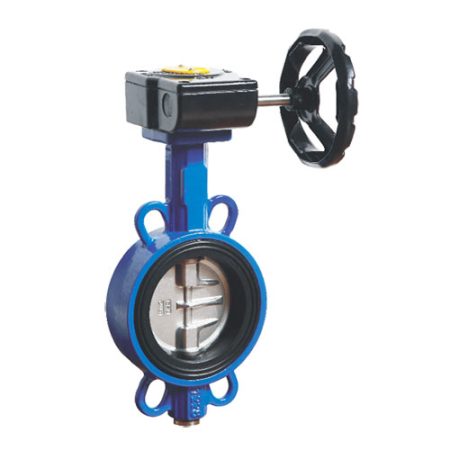
Different types available in the market
There are several types of wafer style butterfly valves available in the market, designed to meet a variety of industrial and commercial needs. The most common type is the concentric butterfly valve, which has a resilient rubber seat with a metal disc positioned in the middle. This type is popular for its affordability and suitability for low-pressure applications. Then there’s the double offset or high-performance butterfly valve, where the disc is off the center of both the body and the shaft, allowing it to achieve a tighter seal and handle higher pressure differentials. There’s also the triple offset butterfly valve, which, due to a third offset that introduces a conical profile of sealing surfaces, ensures zero leakage, making it ideal for critical applications that require absolute shut-off. The materials used for these valves range from cast iron, stainless steel, plastic, among others, depending on the requirements of the system they are to be integrated into. Each type has its unique features and advantages, and the choice depends on the specific application, the nature of the fluid or gas to be controlled, pressure and temperature conditions, and other system requirements.
The Role of Wafer Style Butterfly Valves in HVAC Systems
Wafer style butterfly valves play a pivotal role in Heating, Ventilation, and Air Conditioning (HVAC) systems, which are integral to maintaining comfortable and safe indoor environments. These valves are primarily responsible for controlling the flow of air or water (in case of hydronic systems) within the HVAC system. The disc in the valve, which can be rotated to various degrees, allows for precise control over the volume of airflow or water flow, thereby enabling the system to maintain desired temperature and humidity levels. In cooling systems, for instance, these valves regulate the flow of chilled water to the cooling coils, ensuring optimal performance and energy efficiency. In heating systems, they control the flow of hot water or steam to the radiators or heat exchangers. Their compact design makes them ideal for HVAC systems where space might be at a premium. Furthermore, their robust construction allows them to withstand the constant wear and tear associated with HVAC operations. Also, their ability to maintain a seal against bi-directional pressure differential helps prevent any backflow, ensuring the smooth operation of the HVAC system. As such, wafer style butterfly valves contribute significantly to the overall performance, efficiency, and longevity of HVAC systems, making them indispensable components in these systems.
Explanation of HVAC systems and their importance
Heating, Ventilation, and Air Conditioning (HVAC) systems are integral components of modern infrastructure, playing a crucial role in maintaining comfortable, healthy, and safe indoor environments. An HVAC system is designed to control the indoor climate and air quality by regulating temperature, humidity, and airflow. In heating mode, it increases the temperature of the indoor air during cold weather, while in cooling mode, it reduces the indoor temperature during hot weather. The ventilation component ensures a continuous supply of fresh air and helps remove airborne contaminants. These systems are essential in a variety of settings, from homes and offices to commercial buildings and industrial facilities. They provide thermal comfort and good indoor air quality, enhancing the livability and functionality of these spaces. Moreover, in certain industries like healthcare or manufacturing, HVAC systems can be critical to maintaining sterile environments or protecting sensitive equipment. Therefore, a well-functioning HVAC system is not just a matter of comfort, but can also impact health, productivity, and operational efficiency.
How wafer style butterfly valves are used in HVAC systems
In HVAC systems, wafer style butterfly valves are primarily used to control the flow of fluids, which could be air, water, or refrigerant, depending on the specific type of system. These valves are typically installed in the piping that carries the fluid, and they can be manually or automatically operated to adjust the volume of flow. When the valve is fully open, the fluid can flow freely through the pipe. When the valve is partially or fully closed, it restricts the flow. This precise control over the fluid flow is crucial in HVAC systems. For instance, in a heating system, by adjusting the flow of hot water or steam to the radiators or heat exchangers, the system can maintain the desired indoor temperature. Similarly, in a cooling system, the valve can regulate the flow of chilled water or refrigerant to the cooling coils. In ventilation systems, these valves can control the volume of fresh air intake or exhaust. Therefore, by providing efficient and reliable flow control, wafer style butterfly valves contribute significantly to the performance and energy efficiency of HVAC systems.
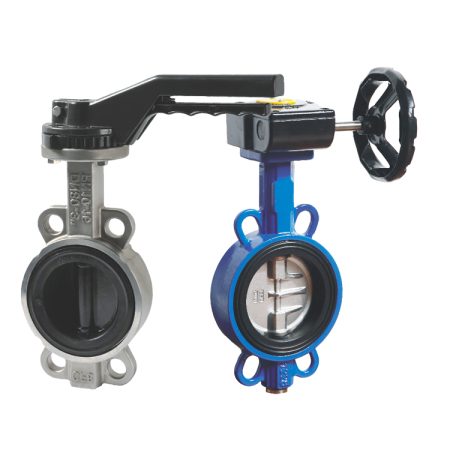
Control of air flow
Control of airflow is a crucial aspect of many systems, especially in HVAC and industrial applications, and this is where devices like wafer style butterfly valves come into play. These valves allow for precise control over the volume of air passing through a system. The disc inside the valve can be rotated to various degrees, either manually or automatically, to open, partially open, or close the valve. When the valve is fully open, air can flow freely through it. When it’s partially open, it restricts the flow, and when it’s fully closed, it blocks the flow completely. This ability to adjust the airflow is essential for maintaining the desired environmental conditions in HVAC systems. For example, in an air conditioning system, controlling the airflow through the cooling coils can help maintain the desired indoor temperature. Similarly, in ventilation systems, controlling the airflow can help achieve the desired indoor air quality by regulating the intake of fresh air and the exhaust of stale air. Therefore, the control of airflow, facilitated by devices like wafer style butterfly valves, is critical for the efficient and effective operation of these systems.
Energy efficiency
Energy efficiency refers to the practice of using less energy to perform the same task, thereby reducing energy waste and saving on energy costs. It’s a critical aspect of sustainable living and responsible resource usage, considering the growing concerns about environmental conservation and climate change. Energy-efficient appliances or systems are designed to provide the required functionality using minimal energy. For instance, energy-efficient HVAC systems, aided by components like wafer style butterfly valves, can maintain optimal indoor climates while consuming less energy. These valves allow for precise control over fluid flow, which can help avoid overcooling or overheating and thus prevent unnecessary energy usage. Similarly, energy-efficient lighting uses less electricity than traditional lighting for the same level of brightness. Energy efficiency not only reduces energy consumption and lowers utility bills but also decreases carbon emissions, contributing to environmental sustainability. Furthermore, it can enhance operational efficiency in industrial settings, leading to cost savings and improved productivity. Therefore, energy efficiency is beneficial from economic, environmental, and operational perspectives.
Maintenance and cost-effectiveness
Maintenance and cost-effectiveness are two interrelated factors that significantly impact the overall operational efficiency and longevity of any system or equipment. Regular and proactive maintenance not only ensures the smooth operation of equipment but also helps in detecting potential issues early, thereby preventing costly repairs or replacements down the line. For instance, components like wafer style butterfly valves, used in systems such as HVAC, need regular inspection and maintenance to ensure their optimal functioning. The maintenance might involve cleaning, lubrication, seal replacement, or disc adjustment, depending on the condition of the valve. While there is a cost associated with this regular upkeep, it is often outweighed by the benefits of avoiding major malfunctions and extending the life of the equipment. Furthermore, well-maintained equipment tends to be more efficient, leading to energy savings and further cost reductions. Therefore, a strategic approach to maintenance can contribute to the cost-effectiveness of operations, making it an essential aspect of effective asset management.
The Application of Wafer Style Butterfly Valves in Water Treatment
Wafer style pneumatic butterfly valves are extensively used in water treatment processes due to their ability to control and isolate the flow of liquids effectively. Water treatment plants, whether they deal with wastewater, drinking water, or industrial water treatment, involve several stages where the flow of water needs to be regulated. In the initial stages, where water is collected, screened, and pumped into the plant, these valves can control the volume of inflow. During the primary treatment phase, where solids are allowed to settle, wafer style butterfly valves can regulate the flow rate to optimize sedimentation. In secondary treatment, which involves biological processes to remove dissolved organic matter, these valves can control the aeration levels by adjusting the airflow. In the disinfection stage, where chemicals are added to kill any remaining pathogens, these valves can regulate the mixing of these chemicals. Moreover, their robust design and materials make them resistant to corrosion and wear, crucial in a water treatment environment that often involves harsh chemicals and abrasive solids. Their compact design also makes them suitable for installations where space is limited. Additionally, their ability to create a tight seal prevents any backflow or leakage, ensuring the integrity of the treatment process. Therefore, wafer style butterfly valves play a vital role in the efficient and effective operation of water treatment plants.
Understanding water treatment processes
Water treatment processes are essential to ensure the safety and usability of water for various purposes, including drinking, irrigation, industrial usage, and returning treated water back into the environment. These processes involve several stages, each designed to remove or neutralize different types of contaminants. Initially, the water undergoes screening to remove large debris. It then enters the coagulation and flocculation stage, where chemicals are added to make the tiny particles stick together and form larger particles, which can be more easily removed. This is followed by sedimentation, where these larger particles settle at the bottom due to gravity. The clear water on top then goes through filtration to remove smaller particles and certain types of bacteria. In the disinfection stage, chemicals like chlorine or ultraviolet light are used to kill any remaining pathogens. Throughout these stages, the flow and mixing of water and chemicals need to be carefully controlled, which is often done using devices like wafer style butterfly valves. After the treatment, the water is either distributed for use or discharged back into the environment in a way that does not adversely impact the ecosystem. Understanding these processes is crucial for effective water management and conservation.
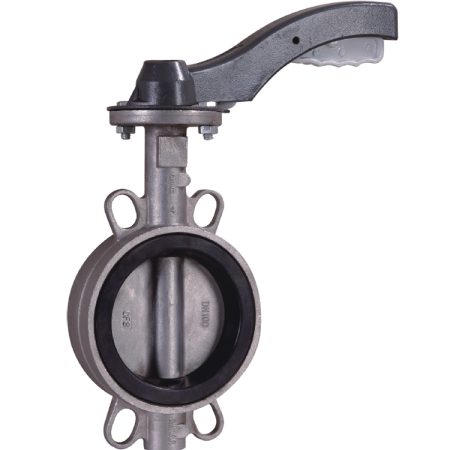
The necessity of wafer style butterfly valves in water treatment
Wafer style electric butterfly valve are an integral part of water treatment processes, serving a crucial role in controlling and regulating the flow of water and other fluids throughout various stages of the process. Given the diverse range of operations involved in water treatment — from initial intake to sedimentation, filtration, disinfection, and final discharge — the need for effective flow control is paramount. These valves, with their ability to provide tight shutoff and precise control over fluid flow, ensure that each stage of the treatment process occurs at the optimal rate. They help maintain the right pressure and volume, allowing for efficient sedimentation and filtration, accurate chemical dosing during disinfection, and controlled discharge of treated water. Additionally, wafer style butterfly valves are known for their durability and resistance to corrosion, which makes them suitable for the challenging conditions often encountered in water treatment plants, including exposure to various chemicals and abrasive materials. Their compact design also saves space, a valuable attribute in facilities where space can be at a premium. Therefore, the necessity of wafer style butterfly valves in water treatment is evident in their contribution to operational efficiency, process accuracy, and system reliability.
Flow control in treatment plants
Flow control is a fundamental aspect of treatment plants, whether they handle water, wastewater, or other types of fluids. The ability to precisely regulate the flow rate and direction is crucial for the efficient and effective operation of these facilities. Flow control devices, such as wafer style butterfly valves, play a significant role in this regard. They allow operators to adjust the volume and pressure of the fluid as it moves through various stages of the treatment process, from intake to discharge. For instance, during the sedimentation stage in a water treatment plant, the flow rate needs to be controlled so that particles have enough time to settle. Similarly, in the disinfection stage, the flow rate can impact the mixing and contact time of the disinfectant with the water. In addition, these valves can provide isolation, enabling maintenance or repair work without disrupting the entire system. Hence, flow control, facilitated by devices like wafer style butterfly valves, is vital for maintaining the performance and integrity of treatment plants.
Durability in harsh conditions
Durability in harsh conditions is a critical attribute for many types of equipment and materials, especially those used in industries like water treatment, oil and gas, mining, and manufacturing. These environments often involve exposure to corrosive substances, abrasive materials, extreme temperatures, high pressure, or a combination of these factors. Therefore, equipment used in these settings, such as wafer style butterfly valves, must be designed and constructed to withstand these conditions over prolonged periods. They are typically made from robust materials like stainless steel, cast iron, or bronze, which exhibit excellent resistance to corrosion and wear. The seals and discs in these valves are often made from resilient materials that can endure repeated opening and closing actions without degrading. Moreover, their design often includes features that minimize the accumulation of debris or sediment, which could otherwise cause wear or hinder their operation. In essence, durability in harsh conditions is not just about surviving these environments, but also about maintaining optimal functionality and performance despite them. This ensures operational efficiency, reduces the need for frequent replacements, and ultimately leads to cost savings.
Ensuring clean and safe water
Ensuring clean and safe water is a fundamental public health priority. It involves a comprehensive process of water treatment and regular quality testing to remove or neutralize contaminants, including bacteria, viruses, algae, fungi, minerals, man-made pollutants, and other harmful substances. The process typically includes stages such as coagulation, sedimentation, filtration, and disinfection. Each stage requires precise control over the flow of water, often facilitated by devices like wafer style butterfly valves. After treatment, the water undergoes rigorous testing to ensure it meets established safety standards. In addition to these technical measures, protecting water sources from pollution is also crucial. This includes implementing regulations to control industrial discharges, managing waste properly, promoting sustainable agricultural practices, and raising public awareness about water conservation. Ensuring clean and safe water is not just about providing potable water for drinking and cooking. It’s also about securing water for agriculture, industry, and maintaining healthy ecosystems, all of which are essential for human health, economic development, and environmental sustainability.
The Importance of Wafer Style Butterfly Valves in Irrigation Systems
Wafer style butterfly valves play a critical role in irrigation systems, which are essential for agricultural productivity and landscape maintenance. These systems require precise control over the flow and pressure of water to ensure optimal watering of crops or plants. Too much water can lead to waterlogging and root diseases, while too little can cause drought stress. Here, wafer style butterfly valves come into the picture with their ability to regulate the flow of water accurately. They can be adjusted to allow varying amounts of water through, depending on the requirements of the specific crops or weather conditions. Furthermore, these valves can isolate sections of the irrigation system for maintenance or repair without disrupting water supply to the entire system, ensuring consistent irrigation. Their robust construction also makes them suitable for use in outdoor environments, where they may be exposed to varying weather conditions and potential physical damage. Moreover, their compact design makes them ideal for installations where space is limited, such as in underground irrigation systems. The importance of wafer style butterfly valves in irrigation systems is, therefore, significant, contributing to efficient water use, crop health, and ultimately, agricultural yield and landscape aesthetics.
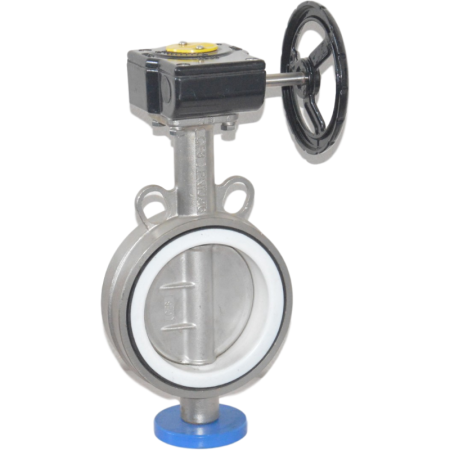
Overview of irrigation systems
Irrigation systems are a vital part of agriculture and landscape management, designed to provide a reliable and controlled supply of water to plants at needed intervals. They serve to supplement natural rainfall and are particularly crucial in regions with dry climates or during periods of insufficient rainfall. There are several types of irrigation systems, each suited to different types of crops, soil conditions, and climatic factors. Drip irrigation systems deliver water directly to the root zone of plants, maximizing water efficiency and minimizing evaporation. Sprinkler systems, on the other hand, mimic natural rainfall by distributing water over the surface of the crops or lawn. There are also surface irrigation systems that rely on gravity to guide water flow, and subsurface systems that deliver water below the soil surface. Each system requires precise control over the flow and pressure of water, often facilitated by devices like wafer style butterfly valves. These systems can significantly improve water efficiency, promote plant health and growth, and ultimately increase agricultural productivity or enhance landscape beauty.
How wafer style butterfly valves contribute to efficient irrigation
Wafer style butterfly valves significantly contribute to the efficiency of irrigation systems by providing precise control over the flow and pressure of water. These valves can be adjusted to allow different amounts of water through, depending on the specific needs of the crops or weather conditions. This ensures that the right volume of water is delivered to each plant, preventing both water wastage and potential damage from over-irrigation or under-irrigation. Additionally, these valves can isolate sections of the irrigation system for maintenance or repair without disrupting the water supply to the entire system, thereby ensuring consistent irrigation. Their compact design also saves space, which is particularly beneficial in underground irrigation systems where space may be limited. Moreover, their robust construction makes them durable and resistant to varying weather conditions and potential physical damage, reducing the need for frequent replacements. Therefore, wafer style butterfly valves play a pivotal role in enhancing the efficiency, reliability, and sustainability of irrigation systems.
Regulation of water flow
Regulation of water flow is a crucial aspect of many systems, including irrigation, water treatment plants, and industrial processes. This involves controlling the rate at which water moves through these systems to ensure optimal performance. Devices such as wafer style butterfly valves play a significant role in this regard. They allow operators to adjust the volume and pressure of the water as it moves through various stages of the system. For instance, in an irrigation system, the flow rate needs to be controlled so that the right amount of water reaches each plant. Too much water can lead to waterlogging and root diseases, while too little can cause drought stress. Similarly, in a water treatment plant, the flow rate can impact the effectiveness of different treatment stages. By providing precise control over water flow, these valves contribute to the efficiency and effectiveness of these systems, ultimately leading to better outcomes, whether that’s healthier crops, cleaner water, or more efficient industrial processes.
Prevention of water leakage
Prevention of water leakage is a critical aspect of water management systems, be it in residential plumbing, irrigation, or industrial processes. Water leakage not only leads to wastage of a precious resource but can also cause damage to infrastructure, increase maintenance costs, and disrupt normal operations. Devices like wafer style butterfly valves play an integral role in preventing water leakage. These valves are designed with a tight seal that effectively blocks water flow when in the closed position, preventing any unwanted leakage. They are typically made from durable materials that can withstand high pressure and resist corrosion, further enhancing their ability to prevent leaks. Regular inspection and maintenance of these valves and other components of the water system are also crucial in leak prevention. Any signs of wear and tear, such as corrosion or damage to the seals, should be addressed promptly to prevent small leaks from turning into major issues. Through effective design, proper installation, and regular maintenance, water leakage can be significantly reduced, leading to more efficient water use and cost savings.
Enhancing agricultural productivity
Enhancing agricultural productivity is a key goal for farmers and agricultural scientists alike, as it plays a pivotal role in ensuring food security and economic sustainability. This can be achieved through several strategies. Firstly, the use of advanced irrigation systems, such as drip or sprinkler systems, can ensure that crops receive the right amount of water at the right time. These systems, often regulated by devices like wafer style butterfly valves, can significantly reduce water wastage and improve crop health. Secondly, the use of high-quality seeds and crop varieties that are resistant to pests and diseases can lead to higher yields. Thirdly, adopting sustainable farming practices, such as crop rotation and organic farming, can enhance soil fertility and prevent the degradation of agricultural land. Additionally, the use of modern technologies, such as precision agriculture and data analytics, can provide farmers with valuable insights into crop performance and enable them to make informed decisions. With these strategies, farmers can maximize their crop yields, reduce their environmental impact, and enhance their profitability.
Key Takeaways
In the realm of irrigation and water management, the importance of devices like wafer style butterfly valves cannot be overstated. They play a crucial role in regulating water flow, allowing for precise control over the volume and pressure of water delivered to crops or landscapes. This precision not only ensures optimal plant health but also contributes significantly to water efficiency, reducing wastage of a vital resource. In addition, these valves’ ability to isolate sections of the system allows for seamless maintenance and repair without disrupting the entire irrigation process, ensuring consistent water supply. Their robust construction ensures durability and resistance to harsh environmental conditions, making them a reliable choice for outdoor installations. Moreover, their compact design makes them suitable for space-constrained installations such as underground irrigation systems. The role of these valves extends beyond agriculture to include water treatment plants and industrial processes, where they facilitate effective water flow regulation. Therefore, in the broader context of water management, wafer style butterfly valves emerge as a key component contributing to efficiency, sustainability, and reliability.
Recap of the importance and applications of wafer style butterfly valves in HVAC, water treatment, and irrigation systems
Wafer style butterfly valves are a fundamental element in various industries, including HVAC, water treatment, and irrigation systems. In HVAC systems, these valves regulate the flow of heating or cooling medium, ensuring optimal indoor climate control. They offer precise control over system operations, contributing to energy efficiency and operational reliability. In water treatment processes, they play a crucial role in controlling the flow and pressure of water through different stages of treatment. This ensures that each stage operates effectively, leading to cleaner and safer water. Meanwhile, in irrigation systems, wafer style butterfly valves are instrumental in delivering the correct amount of water to crops or landscapes. They allow for precise adjustments to water flow based on specific needs, reducing water wastage and promoting healthier plant growth. Additionally, their ability to isolate parts of the system for maintenance or repair without interrupting overall operations makes them invaluable for consistent water delivery. With their compact design, robust construction, and precise control capabilities, wafer style butterfly valves significantly contribute to the efficiency and reliability of these systems.
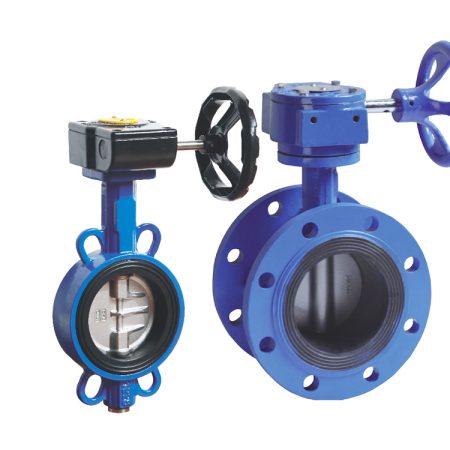
The role of these valves in promoting efficiency, reducing costs, and ensuring safety
Wafer style butterfly valves play a substantial role in promoting efficiency, reducing costs, and ensuring safety across multiple industries. These valves provide precise control over the flow and pressure of fluids, enhancing operational efficiency in systems like HVAC, irrigation, and water treatment. This precise control eliminates wastage, leading to significant cost savings. For example, in irrigation systems, these valves prevent over-watering or under-watering, optimizing water use and reducing expenses associated with excess water consumption. Similarly, in HVAC systems, they help maintain optimal climate control, reducing energy consumption and associated costs. Beyond efficiency and cost reduction, wafer style butterfly valves also contribute to safety. Their ability to quickly isolate parts of a system allows for safe maintenance and repair work without shutting down the entire operation. Moreover, their robust construction helps withstand high pressures and resist corrosion, preventing leaks and potential damage to infrastructure. Therefore, these valves are an essential component in various systems, delivering substantial benefits in terms of operational efficiency, cost-effectiveness, and safety.
Conclusion
In conclusion, wafer style butterfly valves have established themselves as indispensable components in various systems, be it HVAC, water treatment, or irrigation. Their role in regulating and controlling the flow and pressure of fluids is pivotal to the efficient operation of these systems.
In HVAC systems, these valves contribute significantly to maintaining a comfortable and consistent indoor climate. By efficiently managing the flow of heating or cooling medium, they ensure optimal energy use, leading to lower operational costs. The ability to isolate sections of the system makes maintenance tasks safer and more manageable, without causing major disruptions in service.
In water treatment plants, the precise control provided by these valves plays an integral role in ensuring the effectiveness of different treatment stages. By adjusting the flow rate and pressure, each stage of the treatment process can function optimally, resulting in cleaner and safer water output. Moreover, their robust design and construction prevent leaks, contributing to the longevity of the infrastructure and reducing maintenance costs.
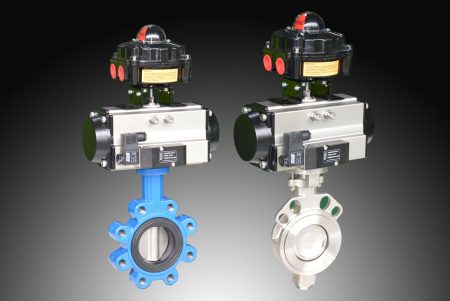
In irrigation systems, wafer butterfly valve help optimize water use, delivering the exact volume of water needed for healthy plant growth. This precision reduces water wastage, promoting sustainability and leading to cost savings for farmers and gardeners. In addition, their compact design makes them ideal for space-constrained installations, enhancing the versatility of irrigation systems.
Beyond these applications, the durability, reliability, and efficiency of wafer style butterfly valves make them a valuable asset in any system where fluid flow regulation is necessary. They not only improve operational efficiency but also contribute to cost reduction and safety. Therefore, whether you’re a HVAC professional, a water treatment specialist, or a farmer, understanding and harnessing the capabilities of wafer style butterfly valves can significantly enhance your operations and bottom line. As we continue to seek sustainable and efficient solutions in these industries, the role of these valves will undoubtedly remain crucial.



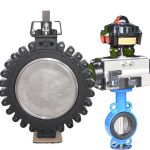
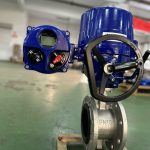
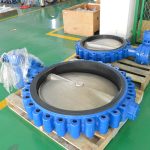
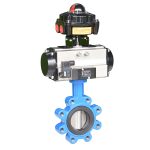
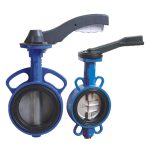
-150x150.jpg)
